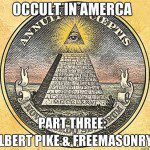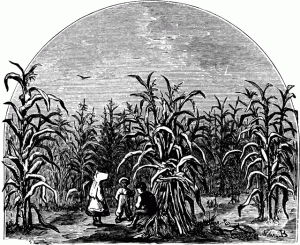 I began planting my fall garden today. Sunflowers, lettuce, spinach, and pumpkins will all hopefully be rising from the dirt soon. I realize that I began my gardening a little late, but I didn’t have much choice in the matter. For the last two and a half years I’ve been (in theory) sharing a backyard.* With my neighbor in the process of moving out my wife and I decided to “reclaim” the bit of backyard that’s allegedly ours. Part of that yard is a garden bed, and planting seeds seemed like a neighborly way to mark our territory.
I began planting my fall garden today. Sunflowers, lettuce, spinach, and pumpkins will all hopefully be rising from the dirt soon. I realize that I began my gardening a little late, but I didn’t have much choice in the matter. For the last two and a half years I’ve been (in theory) sharing a backyard.* With my neighbor in the process of moving out my wife and I decided to “reclaim” the bit of backyard that’s allegedly ours. Part of that yard is a garden bed, and planting seeds seemed like a neighborly way to mark our territory.
As I was digging around in the soil it dawned on me just how odd it was to be planting on the eve of the first harvest. For many Pagans Lughnassa or Lughnasadh is looked at as the first of three harvest celebrations (the other two being the Fall Equinox and then Samhain). Like most Pagan holidays the roots of Lughnassa are in the British Isles where early August apparently marks the start of the harvest.
Like its cousin Imbolc on the Wheel of the Year Lughnassa has always felt like a holiday out of time and space. Growing up in the Midwest the first grain harvests were always in September, not early August. Moving to California hasn’t helped much either because here it’s always harvest season, and the corn (and soybean) fields of my youth are only memories. When I pass a farm these days it’s full of baby lettuces or artichokes, never grain.
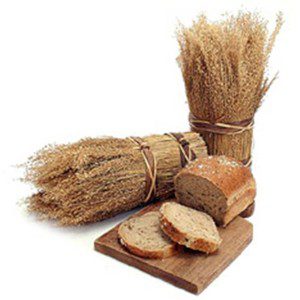 Grain associations are a common theme when it comes to Lughnasadh. Christians celebrated this particular sabbat as Lammas and many of the things we associate with the holiday are Christian and not pagan in the origin. Lammas which means “loaf mass” is the celebration of the first bread, something honored in many a Pagan circle this time of year. It’s certainly possible that ancient pagans celebrated Lughnassa as the first harvest too, but there’s no evidence to support it. To me it’s never mattered much who did what first, seasonal celebrations will always be pagan to me.
Grain associations are a common theme when it comes to Lughnasadh. Christians celebrated this particular sabbat as Lammas and many of the things we associate with the holiday are Christian and not pagan in the origin. Lammas which means “loaf mass” is the celebration of the first bread, something honored in many a Pagan circle this time of year. It’s certainly possible that ancient pagans celebrated Lughnassa as the first harvest too, but there’s no evidence to support it. To me it’s never mattered much who did what first, seasonal celebrations will always be pagan to me.
If ancient pagans didn’t celebrate the feast of the loaves on Lughnassa what were they doing on that day? There’s no doubt that the holiday was celebrated in pagan antiquity, but what was celebrated remains an open question. Most Pagans associate the Celtic god Lugh with Lughnassa which is an easy association. The sabbat has his name in its title after all, but much like the root “bel” in Beltane the “lugh” in Lughnassa might simply be a root word (1). Lugh means “bright” or “shining” (2) and because of this the god is often misrepresented as a solar deity, which is not how the ancient Celts perceived him.
One of the odd things about Lammas is that it’s never been a solar holiday. Within both Beltane and Midsummer there are the bones of an ancient fire festival. If Lugh was truly a sun god it stands to reason that there would be a little bit of fire involved with his holiday, but that doesn’t seem to be the case. There were no great bonfires for the celebration of the First Fruits (yet another name for this sabbat), the only fires to mark its arrival were in the hearths of Christians centuries later.
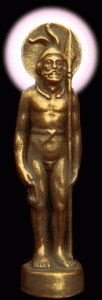 The Roman god most associated with Lugh was Mercury, who was neither a sun god or a god of the harvest. Mercury was the god of travelers, thieves, commerce, golden tongues, and because of all those things was often described as a trickster figure. Lugh seems to also inhabit many of those same realms, and several others. Unlike Mercury Lugh was also a god of war, his spear being a particular noteworthy accessory. Ronald Hutton describes Lugh as “the patron of all human skills,” which certainly encompasses a great many attributes.
The Roman god most associated with Lugh was Mercury, who was neither a sun god or a god of the harvest. Mercury was the god of travelers, thieves, commerce, golden tongues, and because of all those things was often described as a trickster figure. Lugh seems to also inhabit many of those same realms, and several others. Unlike Mercury Lugh was also a god of war, his spear being a particular noteworthy accessory. Ronald Hutton describes Lugh as “the patron of all human skills,” which certainly encompasses a great many attributes.
If there’s a time of year that calls for a great many skills it’s certainly early August. Harvesting cereal crops takes many different talents. There are the tools needed for the gathering of the grain and then there’s the process of drying out and storing that grain for the coming winter. Harvesting crops is hard work, not to mention all of the other preparations needed to survive the coming winter months. Perhaps Lugh’s association with early August is due to the gifts he shared with humankind, the gifts that make civilization possible?
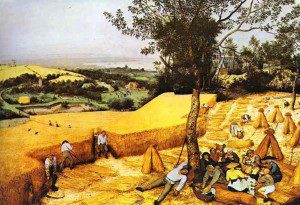 I find it interesting that in the Middle Ages Lammas was associated with more than just bread. It was a time for fairs, the payment of rents, elections, and the opening of public lands. (3) Money and elections certainly wouldn’t be foreign to a god often equated with Mercury. Local fairs are also great opportunities to show off a skill set. Even today there are a lot of county fairs in late July and throughout August where people show off livestock, produce, and their skills at baking. (Growing up down South my local county fair had an award for best cherry pie.) Perhaps the Lugh in Lughnassa is easier to find than I thought it would be.
I find it interesting that in the Middle Ages Lammas was associated with more than just bread. It was a time for fairs, the payment of rents, elections, and the opening of public lands. (3) Money and elections certainly wouldn’t be foreign to a god often equated with Mercury. Local fairs are also great opportunities to show off a skill set. Even today there are a lot of county fairs in late July and throughout August where people show off livestock, produce, and their skills at baking. (Growing up down South my local county fair had an award for best cherry pie.) Perhaps the Lugh in Lughnassa is easier to find than I thought it would be.
My favorite celebrations of Lughnassa have always been a combination of its various attributes. There was a Saturday night spent in a cornfield making corn dollies while staring up at the moon. Last year I donned a lion costume to celebrate a Wizard of Oz inspired Lammas ritual, a rite that required many skills. I also have fond memories of Druid-inspired rituals this time of year, and moments of just pure exhaustion where a deep breath was my only marking of the turn of the Wheel. (Some of my favorite festivals used to end the last week of July and we often ended up skipping Lughnassa to unpack.)
This year I’m probably going to focus on grain, most specifically corn. One of my backyard neighbors parting gifts was the remnants of her garden. In what is now my garden there’s a lonely stalk of corn growing next to two tomato plants. I could be wrong, but the sweet corn she left us looks ready for the harvest.
*Northern California sort of stacks people on top of people. If a garage can be converted into a one bedroom apartment it will be. Sometimes that results in a shared backyard being taken over by one person.
1. Celtic Gods, Celtic Goddesses by R.J. Stewart, Sterling Publishing 1990. page 117.
2. Stations of the Sun by Ronald Hutton, Oxford Press 1996. page 327
3. Hutton page 331


